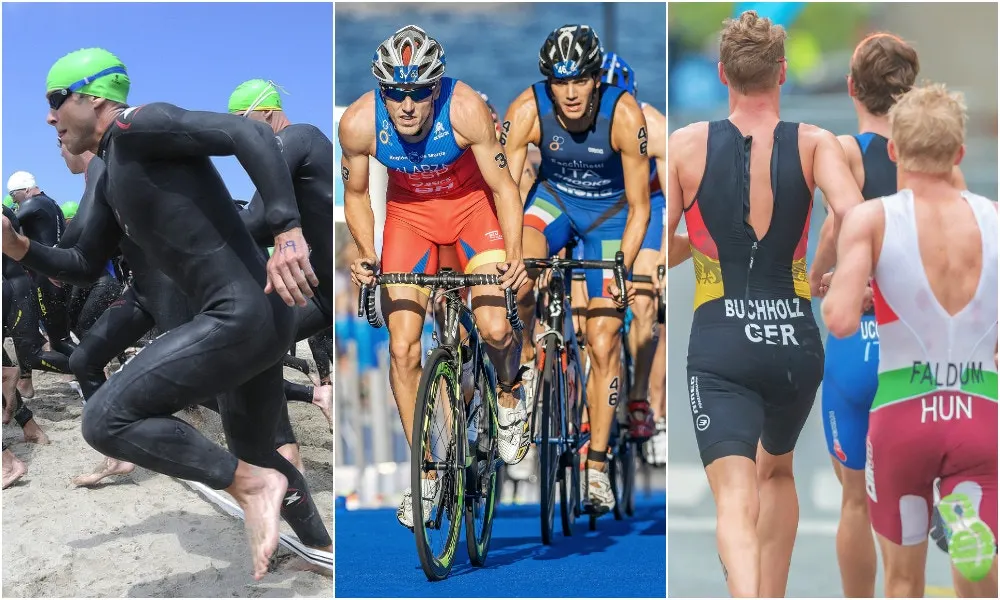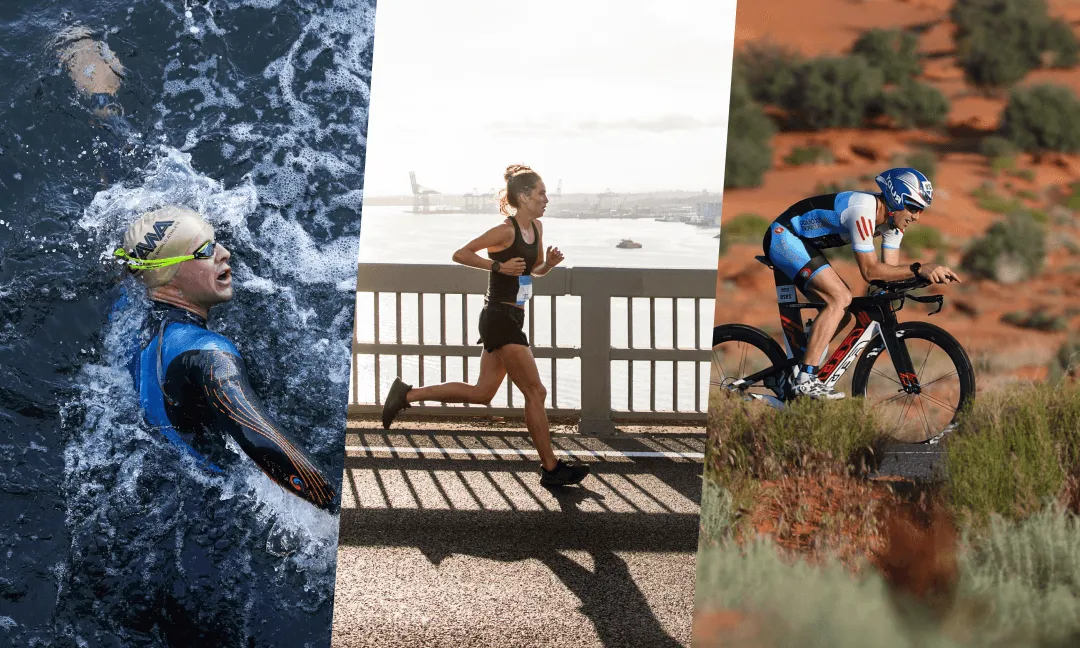Are you thinking about trying a triathlon but feel intimidated by the ultra-long races you see on TV? There’s a perfect starting point that offers all the challenge and fun without requiring a total life overhaul: the sprint triathlon. Understanding the standard sprint tri distances is the first step on your journey. This guide will break down everything you need to know about this popular and accessible race format. We’ll cover the swim, bike, and run segments in detail, explore training commitments, and answer all your common questions.
A sprint triathlon is an excellent way for beginners to enter the world of multi-sport events. The distances are manageable, making it a fantastic goal to work toward. For experienced athletes, it’s a great way to test your speed and improve your race-day transitions. Let’s dive into the specifics of sprint tri distances and get you ready for your first finish line.
Table of Contents
What Are the Standard Sprint Tri Distances?
A sprint triathlon consists of three back-to-back segments: swimming, cycling, and running. While the exact distances can vary slightly from one race to another, there is a generally accepted standard. The most common tri sprint distance is a 750-meter swim, a 20-kilometer bike ride, and a 5-kilometer run. These distances are long enough to be a real challenge but short enough to be achievable for most fitness levels with consistent training.
This format makes it the most popular type of triathlon, with thousands of events held across the United States each year. It provides a full triathlon experience—from the open water swim to the final sprint down the finishing chute. The name “sprint” can be a little misleading; for most participants, it’s more about endurance and pacing than an all-out sprint. Elite athletes might finish in under an hour, but most age-group competitors take between 90 minutes and two hours to complete the event.
Sprint Tri Distances in Miles
For those more familiar with miles, understanding the sprint tri distances in miles can make the goal feel more concrete. Breaking down the kilometers into miles helps you visualize each leg of the race and plan your training more effectively.
Here is a simple conversion of the standard sprint tri distances:
- Swim: 750 meters is approximately 0.46 miles.
- Bike: 20 kilometers is approximately 12.4 miles.
- Run: 5 kilometers is approximately 3.1 miles.
Seeing the sprint tri distances in miles often makes the event seem much more attainable. A half-mile swim, a 12-mile bike ride, and a 5K run are distances that many people have tackled individually. The unique challenge of a triathlon is putting them all together in a single, continuous event. This conversion is crucial for planning your training sessions, especially if you use GPS watches or apps that track your progress in miles.
Comparing Triathlon Distances
To give you some perspective, it’s helpful to see how sprint tri distances stack up against other common triathlon formats. This comparison highlights why the sprint is such a great entry point into the sport.
| Race Type | Swim Distance | Bike Distance | Run Distance |
|---|---|---|---|
| Super Sprint | 400m (0.25 mi) | 10km (6.2 mi) | 2.5km (1.6 mi) |
| Sprint | 750m (0.46 mi) | 20km (12.4 mi) | 5km (3.1 mi) |
| Olympic | 1.5km (0.93 mi) | 40km (24.8 mi) | 10km (6.2 mi) |
| Half-Iron (70.3) | 1.9km (1.2 mi) | 90km (56 mi) | 21.1km (13.1 mi) |
| Full Iron (140.6) | 3.8km (2.4 mi) | 180km (112 mi) | 42.2km (26.2 mi) |
As you can see, the Olympic distance is exactly double the sprint distance, and the distances increase significantly from there. Starting with a sprint allows you to master the basics of training, nutrition, and transitions before considering a longer and more demanding race.
Breaking Down Each Leg of the Race
To successfully complete a sprint triathlon, you need to be prepared for each distinct segment. Let’s take a closer look at the swim, bike, and run portions to understand what to expect and how to train for them.
The Sprint Tri Swim Distance: 750 Meters
For many new triathletes, the 750-meter swim is the most daunting part of the race. The sprint tri swim distance often takes place in open water, like a lake or an ocean, which can be very different from swimming laps in a pool. The start can be crowded, with many athletes entering the water at once. It’s important to stay calm and find your own rhythm.

Training for the swim should focus on building endurance and comfort in the water. You should be able to swim the 0.46-mile distance continuously without stopping. Practicing in open water before race day is highly recommended to get used to the conditions. You’ll learn how to “sight” (lift your head to spot a buoy or landmark) to swim in a straight line. If the water temperature is below a certain point (usually around 78°F or 25.5°C), you’ll be allowed to wear a wetsuit, which provides buoyancy and warmth, often making the swim easier.
Swim Training Tips
- Consistency is key: Aim for at least two swim sessions per week.
- Drills and endurance: Mix your training between technique drills to improve your form and longer, continuous swims to build stamina.
- Open water practice: If possible, swim in a lake or ocean to simulate race conditions. Practice sighting and swimming with other people around you.
The Sprint Tri Bike Distance: 20 Kilometers
After the swim, you’ll head to the transition area (often called T1) to grab your bike. The sprint tri bike distance is 20 kilometers, or 12.4 miles. This is the longest portion of the race in terms of time for most people. The course can be flat and fast or hilly and challenging, so it’s important to check the race-specific details beforehand.
You don’t need a high-end triathlon bike to complete a sprint triathlon. A road bike, hybrid, or even a mountain bike will work just fine, as long as it’s in good working order. The most important thing is to be comfortable and safe. Remember to wear a helmet—it’s mandatory in every triathlon. Training for the bike leg should include rides that are at least the race distance, and you should also practice riding after a swim to get used to the feeling.
Bike Training Tips
- Build your base: Start with shorter rides and gradually increase your distance to comfortably cover 12-15 miles.
- Practice hills: Even if your race is mostly flat, training on hills will build strength and power.
- Brick workouts: Practice transitioning from the bike to the run. After a bike ride, do a short run (10-15 minutes) to get your legs used to the change.
The Tri Sprint Distance Run: 5 Kilometers
The final leg of the triathlon is the 5-kilometer (3.1-mile) run. After swimming and biking, your legs might feel heavy or like “jelly” when you start running. This is a normal sensation that improves with training. The run is where you empty the tank and push for the finish line. The course is typically on paved roads or paths.
Training for a 5K run is straightforward for many, but the challenge here is doing it after the other two disciplines. Your training should include regular runs to build your endurance for the 3.1-mile distance. Incorporating “brick” workouts—where you run immediately after a bike ride—is one of the most effective ways to prepare for the run leg of a triathlon. This helps your body adapt to the transition and run more efficiently on tired legs.
Run Training Tips
- Consistent running: Aim for two to three runs per week.
- Vary your pace: Include a mix of easy runs and some faster-paced efforts to improve your speed.
- Master the brick: Make brick workouts a regular part of your training schedule in the weeks leading up to the race.
Preparing for Your Sprint Triathlon
Training for a sprint triathlon is a manageable commitment. Most beginner training plans last 8 to 12 weeks and require about 4-6 hours of training per week. This usually involves two sessions of each discipline—swimming, biking, and running—each week.
What is a Good Time for a Sprint Triathlon?
A “good” time is very personal and depends on your fitness level, the course difficulty, and your goals. Simply finishing your first sprint triathlon is a huge accomplishment. However, to give you a general idea:
- Elite: Under 1 hour
- Competitive Age-Grouper: 1:00 – 1:20
- Average Finisher: 1:20 – 1:45
- Beginner Goal: Aim to finish comfortably, perhaps under 2 hours.
Don’t get too caught up in times for your first race. Focus on enjoying the experience, learning about the sport, and crossing that finish line with a smile.
Beyond the Sprint: The Super Sprint
If the standard sprint tri distances still feel a bit too long, you might consider a super sprint. This is an even shorter version of the race, perfect for absolute beginners or those who want a very fast, intense event.
- Super Sprint Swim: 400m (0.25 miles)
- Super Sprint Bike: 10km (6.2 miles)
- Super Sprint Run: 2.5km (1.6 miles)
This format is a fantastic confidence booster and can get you hooked on the sport without a major training commitment.
Key Takeaways
- The standard sprint tri distances are a 750m swim, 20km bike, and 5km run.
- In miles, this translates to a 0.46-mile swim, a 12.4-mile bike, and a 3.1-mile run.
- The sprint triathlon is the most popular race distance and is perfect for beginners.
- Training requires about 4-6 hours per week over 8-12 weeks.
- “Brick” workouts (biking followed immediately by running) are essential for preparing your body for race day transitions.
- Don’t worry about your time in your first race; focus on finishing and enjoying the journey.
Frequently Asked Questions About Sprint Tri Distances
Q1: Can I complete a sprint triathlon without any experience?
A1: Yes! The sprint triathlon is designed to be accessible. As long as you can swim, bike, and run the required distances individually, a structured training plan can help you put it all together. Start slowly and build your endurance over several weeks.
Q2: What kind of gear do I absolutely need for a sprint triathlon?
A2: For your first race, you can keep it simple. You’ll need a swimsuit or triathlon suit, goggles, a bike (any kind will do), a helmet, and running shoes. You don’t need the most expensive gear to get started.
Q3: How hard is a sprint triathlon?
A3: The difficulty is subjective. For a fit person, it can be a fun challenge. For someone starting their fitness journey, it will be tough but very rewarding. The key is consistent training. The challenge of switching between three different sports is what makes it uniquely demanding.
Q4: Do I have to swim in open water?
A4: Most sprint triathlons feature an open water swim. However, some beginner-friendly events use a pool for the swim leg, which is a great option if you’re nervous about open water. These are often called “pool triathlons.”
Q5: What is the average finishing time for a sprint triathlon?
A5: For age-group athletes, the average time is around 1 hour and 30 minutes. This can vary widely based on the course and individual fitness. A common breakdown is about 20-25 minutes for the swim, 40-50 minutes for the bike, and 25-30 minutes for the run, plus transition times.

Leave a Reply to What is Sprint Football? – InfoSprint Cancel reply